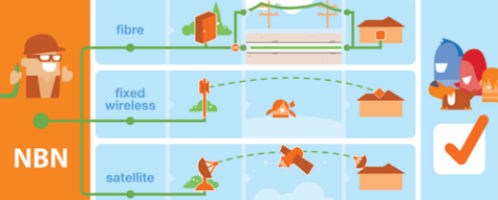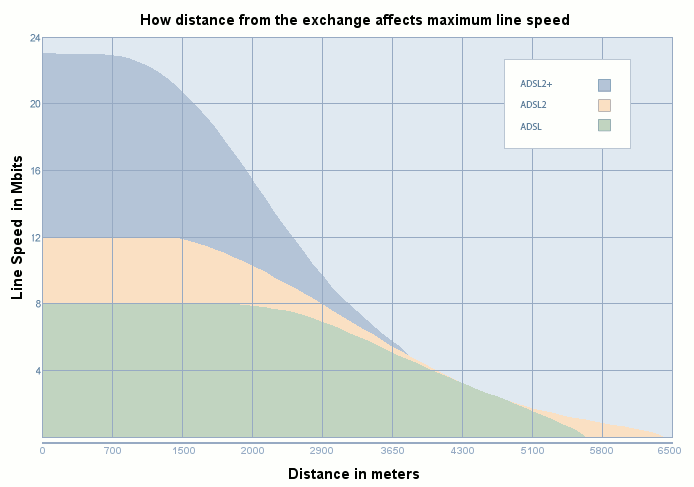With Liberals keeping their government, their NBN approach has both people excited and frustrated. Why? Because we're finally getting NBN, but it's not at its full potential. What does this mean? As always, we're still behind, somewhat.

But among all this, do we really need NBN? Yes, for futureproofing and because it'll be beneficial. However, is NBN overrated? That's tough to say.
Obviously, having NBN is a good thing, and I'm not saying that we don't need it. Having NBN will definitely be very beneficial, however, will it really make a difference?
If you're interested, here's a great article explaining the difference between NBN and other various forms of network communication.
However, the deciding factor of whether NBN will really make a difference or not is unfortunately not explained in the article - it doesn't explain how NBN functions. If you'd like to know more, you can find out here.
Now, to many users, this may all mean nothing. To some, they probably don't know what it's supposed to mean. Then there'll be those who can't wait for it. We've really come a long way - from 56K internet, we grew to ADSL/2+, Cable Broadband, and now NBN, just to sum it up.
Well, here's a basic run down of how each one works:
ADSL works via nodes, access points that provides you with your internet connection. The internet provider provides your internet connection to a node, which then the node provides the internet connection to you and everyone else. The closer you are to the node, the faster the network speed will be. The reason why your internet speeds decrease with distance is because the cable connection uses copper wires, which although has low resistance, increases as the signal travels further and further away from the node. It has a maximum of around 24Mbps, which is basically a download speed of 2.4 Mb/s.

Broadband's speed isn't affected by distance, but by the number of users using the cable line. What this means is that the optical fiber cable is distributed to an area, thus speeds are distributed among all users of that one cable; you, your neighbours, the street down from you, etc. Broadband plans these days go at 100Mbps, which is a about 10 Mb/s, and can potentially be faster.
For NBN, to simply put it, the provider uses optical fiber cables rather than copper wires and directly connects to you, via a node - FTTH/FTTP, Fiber to the Home/Premises. Ultimately, what it means is that you won't have to worry about distance affecting your speeds like ADSL, and because it's a more direct connection to you, you can get better consistent speeds. This, is given that they choose to upgrade the copper wires from the nodes to optical fiber cables. If the Australian government decides to stick to using copper wires, which Liberal seems to have, then essentially we'll just be getting an updated ADSL service - FTTN, Fiber to the Node, ADSL3++ anyone?

If you want to get a better idea of how NBN will roll out to us, click here.
So what's the issue?
The current NBN is basically an updated ADSL2+, and for those who want a direct connection, will need to pay a premium for that service; learn more here. Now, even when using premium services, if other people in your neighbourhood decide to jump onboard, although the price will be distributed among all users of the premium service, your speeds are also distributed. Of course, the potential speeds of NBN, about 10000Mbps, which is 1 GB/s, and higher, will inevitably compensate for the distribution, just not at this current stage where NBN is only rolling out with 100Mbps..
So, do we need NBN? Yes, it'll futureproof us, provide a better infrastructure for the future, and compensate for some speed loss due to network distribution. However, as it stands now, it really isn't worth it and is completely blown out of proportion, and here's why:
1) Technology gets cheaper - you may pay the premium now for faster connections, but eventually, everyone else will jump onboard and speeds will inevitably drop again. A great example of this situation is in my very own neighbourhood. If we were to get maximum benefits of NBN from the beginning, then this wouldn't pose a potential problem, even if only a short-lived one. Here's an example of area distribution:
We were with Telstra until Optus knocked on our doors with an great offer for cable broadband - unlimited downloads, 100Mbps connection, cheaper price, who wouldn't jump onboard? Well, that's exactly right, who wouldn't? The whole neighbourhood did. But that's okay right? Cable broadband uses optical fiber cables, it's fast, and 100Mbps should be sufficient, right? Well, when I say the whole neighbourhood, I mean the whole neighbourhood. During peak hours, our speeds drop down to 2Mpbs tops, which is basically 200 Kb/s. So from a 10 Mb/s connection that I get during the day, it drops down to a 200 Kb/s connection during the afternoon and night. Just to make calculations easy, that's approximately 50 households who signed up to Optus, running on a single fibre optic cable that's providing our internet.
Now, will NBN remedy this? During the initial roll out, maybe. NBN will still be running at 100Mbps during its initial phase, the same as cable broadband, but by using nodes, there'll be less houses that the one connection is distributed. So potentially, simply due to a greater speed capacity, and closer connections, we may be able to start using our internet. But hypothetically speaking, if NBN was running at its full potential, that'll be a 10000Mbps connection distributed among 50 households, I'd get a 200Mbps. Yes, even with speeds distributed, NBN solves this issue - just not in its infant stage.

To get a better idea of the capabilities of NBN, have a look here. With NBN running at full potential, distribution really isn't an issue any longer, thus NBN is needed.
2) Cable broadband is capable of downloading, video chatting, streaming videos, and gaming online, all at the same time. To stream 720p, you need a connection of about 2Mbps. 1080p requires about 4Mbps, whilst 4K of about 16Mbps. So technically speaking, you could stream your movies whilst do browsing and doing many other things. But of course, being cable broadband as it is, not everyone runs at the full 100Mbps, so obviously you wouldn't be able to do all those things at the same time.
So what's the problem and solution here? The issue is that there isn't enough optical fiber cables running into the one neighbourhood. So how does NBN solve it? By having nodes into areas, there's less distribution per connection, which is the issue we're running into Optus has right now. If they would have just done this from the start, right? But once again, with NBN running at full potential, distribution really isn't an issue, thus NBN is needed.
3) Internet restrictions - the biggest culprit, and many Australians know it.
We're on 100/40Mbps plans, but our upload doesn't go anywhere near 40Mbps, but only 2Mbps, and less, average. What does this mean? The lag you get from your online gaming isn't necessarily because someone's streaming a movie, download a song, or because your net speeds are distributed to the neighbourhood, but most likely because your upload and response times just can't handle it, especially if someone's already video chatting.
So the issue here is, we may get NBN and faster downloads, but if they still restrict our uploads, we'll still be lagging behind.
So in the end, NBN has the potential to remedy many issues internet uses struggle with, however, in its current form, no. If service providers were to provide NBN at a greater capacity that what is available with cable broadband at the moment, then NBN would be worth it. If service providers removed stupid restrictions and limits, such as the upload limits, and where able to provide more nodes/connections into an area, cable broadband is very capable for the time being. Until then, NBN, in its current form, is just overrated and solves almost nothing.
If the government really wanted to save money, what may possibly be a cheaper option yet, is to upgrade ADSL from using copper wires to optical fiber cables. That way nodes are already in place, technology is already available, and it's just switching out old cables for newer ones - just my 2 cents.
